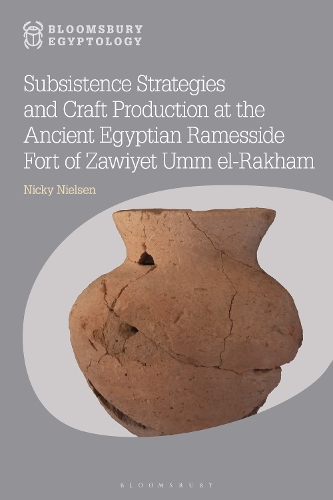
Subsistence Strategies and Craft Production at the Ancient Egyptian Ramesside Fort of Zawiyet Umm el-Rakham
(Hardback)
Available Formats
Publishing Details
Subsistence Strategies and Craft Production at the Ancient Egyptian Ramesside Fort of Zawiyet Umm el-Rakham
By (Author) Dr Nicky Nielsen
Bloomsbury Publishing PLC
Bloomsbury Academic
8th February 2024
United Kingdom
Classifications
Professional and Scholarly
Non Fiction
Ancient history
932.1
Physical Properties
Hardback
232
Width 160mm, Height 236mm, Spine 18mm
480g
Description
Drawing on more than 20 years of archaeological study and investigation at Zawiyet Umm el-Rakham, this book paints a nuanced picture of daily life not only at this liminal military site, but also in Ramesside Egypt more broadly. Constructed during the reign of Ramesses II, the fortified settlement was situated 300 kilometres west of Alexandria and represents the furthest western outpost of the Egyptian New Kingdom empire. Excavations in Area K of the fortress have uncovered extensive evidence for the living arrangements, minor industries, food production and daily life of the forts inhabitants. This previously unpublished material forms the bedrock of this volume, which focuses on analysing the various subsistence and craft production strategies that were conducted alongside each other in this area, from baking, brewing and butchery to lithics working, bone-carving and weaving. These traces of the activities of the soldiers and their families shed new light on what life was like at this military installation and for ordinary Egyptians more widely, shifting away from a focus on elite social groups. The archaeological evidence covered in this book prompts a re-evaluation of the realities of the relationship between Egyptians and Libyans at the close of the Late Bronze Age. The purpose of the fortress' construction was primarily defensive, however the surviving material points to co-operation by means of collaborative farming and trading, and provides a direct counterpoint to the more belligerent contemporary royal monumental inscriptions describing Egypto-Libyan relations.
Author Bio
Nicky Nielsen is Senior Lecturer in Egyptology at the University of Manchester, UK.
